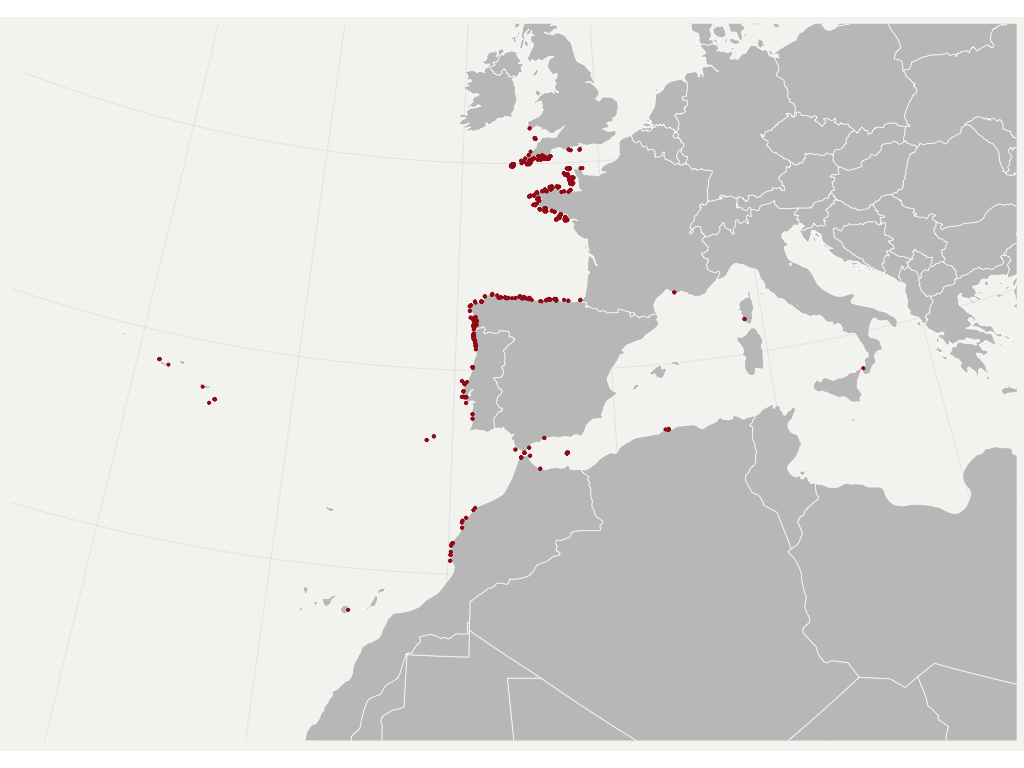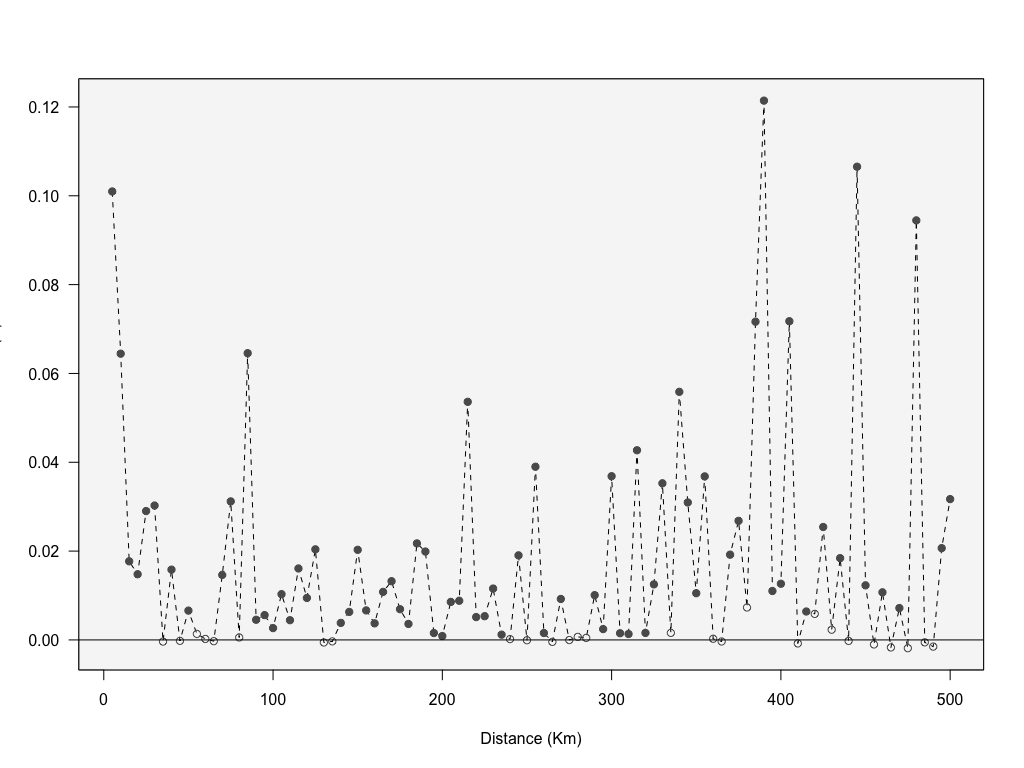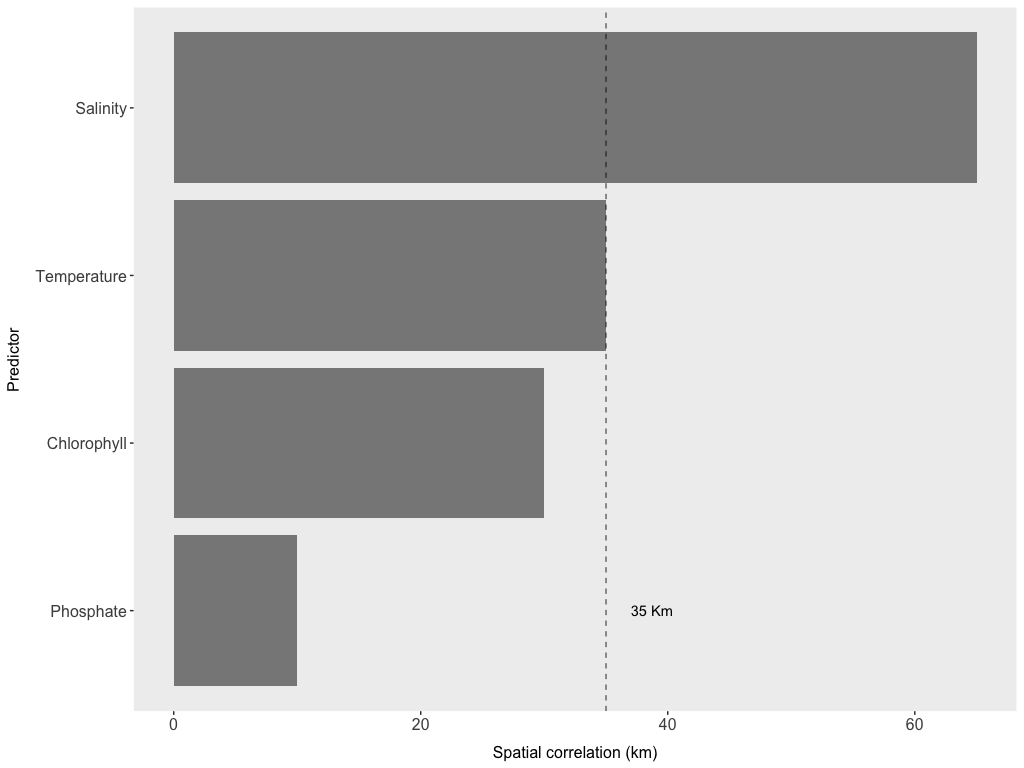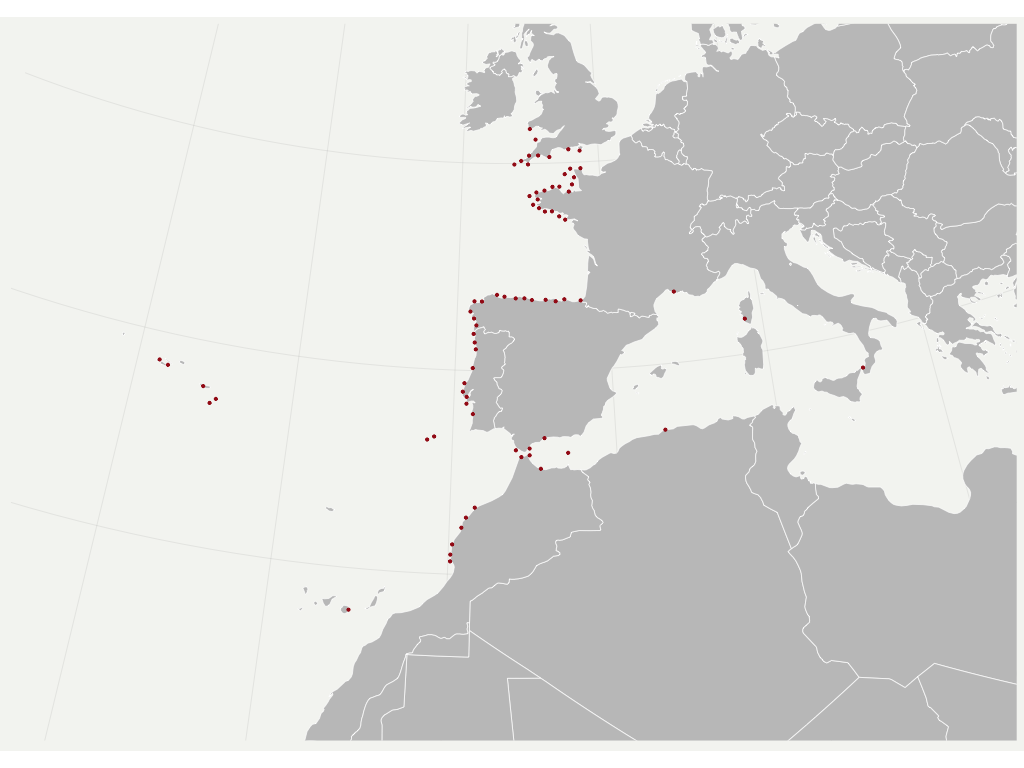物種分布模型
Species distribution models (SDM; for review and definition see, e.g., Peterson et al., 2011) are a dominant paradigm to quantify the relationship between environmental dynamics and several manifestations of species biogeography. These statistical approaches pushed an emerging body of research describing the global distribution of species, addressing niche-based questions, supporting biodiversity conservation and ecosystem-based management, as well as infering the likely anthropogenic pressures leading to population turnover and extinction.
物種分布模型(SDM;有關審查和定義,請參見例如Peterson等,2011)是量化環境動態與物種生物地理學幾種表現之間關系的主要范例。 這些統計方法推動了一個新興的研究機構,它描述了物種的全球分布,解決了基于生態位的問題,支持生物多樣性保護和基于生態系統的管理,并推斷出可能導致人口流動和滅絕的人為壓力。
Spatial autocorrelation (SA) is a common challenge while modelling the distribution and abundance of species. This phenomenon, likely present in most ecological datasets, denotes the situation where the values of variables sampled at nearby locations are not independent due to correlation with values at nearby locations (i.e., the value of a predictor variable at a given site can be partially predicted by the values at neighbouring sites).
在對物種的分布和豐富度進行建模時,空間自相關(SA)是一個普遍的挑戰。 這種現象很可能出現在大多數生態數據集中,表示這樣一種情況:由于與附近位置的值相關,因此在附近位置采樣的變量的值不是獨立的(即,可以對給定位置的預測變量的值進行部分預測)根據相鄰站點的值)。
Accounting for SA has not received much attention in applied SDM studies, however, when present, it may result in poorly specified models and inappropriate spatial inference and prediction. Recent studies proposed to incorporate SA into the actual models while predicting distributions (coined ‘spatial models’; Dormann, 2007), however, this approach does not allow to transfer models to new independent data (e.g., temporal and spatial transferability).
在應用SDM研究中,對SA的會計處理并未引起太多關注,但是,如果存在SA會計,可能會導致指定的模型不正確以及空間推斷和預測不適當。 最近的研究提出在預測分布的同時將SA合并到實際模型中(硬幣化的“空間模型”; Dormann,2007年),但是,這種方法不允許將模型轉移到新的獨立數據中(例如,時間和空間轉移性)。
I propose a straightforward approach to reduce the effect of SA in SDM (see also Boavida et al., 2016 for more details). I use a simple example bellow focused on a brown algae species capable of producing marine forests and a set of environmental predictors known to largely explain its distribution.
我提出了一種直接的方法來減少SA在SDM中的影響(更多信息,另請參閱Boavida等人,2016)。 我用一個簡單的例子來說明波紋管,它著重于能夠生產海洋森林的褐藻物種,以及一組已知的環境預測因子,可以在很大程度上解釋其分布。
Get the R code: Reducing spatial autocorrelationhttps://github.com/jorgeassis/spatialAutocorrelation
1. A correlogram is produced to assess the correlation of each variable predictor within a range of geographic distances.
1.產生相關圖以評估地理距離范圍內每個變量預測變量的相關性。
2. For each distance class, a linear model tests the effect of correlation with geographic distance. This finds the minimum non-significant autocorrelated distance.
2.對于每個距離類別,線性模型測試與地理距離的相關性影響。 這將找到最小的不重要的自相關距離。

3. The average of the minimum non-significant distances found per variable is used to prune the occurrence records, by leaving only one record within such distance.
3.每個變量找到的最小非有效距離的平均值用于修剪出現記錄,方法是在該距離內僅保留一個記錄。


Get the R code: Reducing spatial autocorrelationhttps://github.com/jorgeassis/spatialAutocorrelation引用文獻 (Literature cited)
C. F. Dormann (2007) Effects of incorporating spatial autocorrelation into the analysis of species distribution data. Global Ecology and Biogeography. 16, 129–138.
CF Dormann(2007)將空間自相關納入物種分布數據分析的影響。 全球生態與生物地理。 16、129–138。
Peterson, A.T., Soberon, J., Pearson, R.G., Anderson, R.P., Martinez-Meyer, E., Nakamura, M. &Araujo, M.B. (2011) Ecological niches and geographic distributions. Monographs in Population Biology, 314 pp. Vol. 49. Princeton University Press, Princeton.
Peterson,AT,Soberon,J.,Pearson,RG,Anderson,RP,Martinez-Meyer,E.,Nakamura,M.&Araujo,MB(2011)生態位和地理分布。 專著《人口生物學》 ,第314頁,第一卷。 49.普林斯頓大學出版社,普林斯頓。
Boavida, J., Assis, J., Silva, I. et al. (2016) Overlooked habitat of a vulnerable gorgonian revealed in the Mediterranean and Eastern Atlantic by ecological niche modelling. Scientific Reports. 6, 36460.
Boavida,J.,Assis,J.,Silva,I。 等。 (2016)通過生態位建模在地中海和東大西洋發現了易受攻擊的高哥人的棲息地。 科學報告。 6,36460。
翻譯自: https://medium.com/themarinedatascientist/reducing-spatial-autocorrelation-in-species-distribution-models-fe84d4269cee
物種分布模型
本文來自互聯網用戶投稿,該文觀點僅代表作者本人,不代表本站立場。本站僅提供信息存儲空間服務,不擁有所有權,不承擔相關法律責任。 如若轉載,請注明出處:http://www.pswp.cn/news/389047.shtml 繁體地址,請注明出處:http://hk.pswp.cn/news/389047.shtml 英文地址,請注明出處:http://en.pswp.cn/news/389047.shtml
如若內容造成侵權/違法違規/事實不符,請聯系多彩編程網進行投訴反饋email:809451989@qq.com,一經查實,立即刪除!![BZOJ1014: [JSOI2008]火星人prefix](http://pic.xiahunao.cn/BZOJ1014: [JSOI2008]火星人prefix)


















